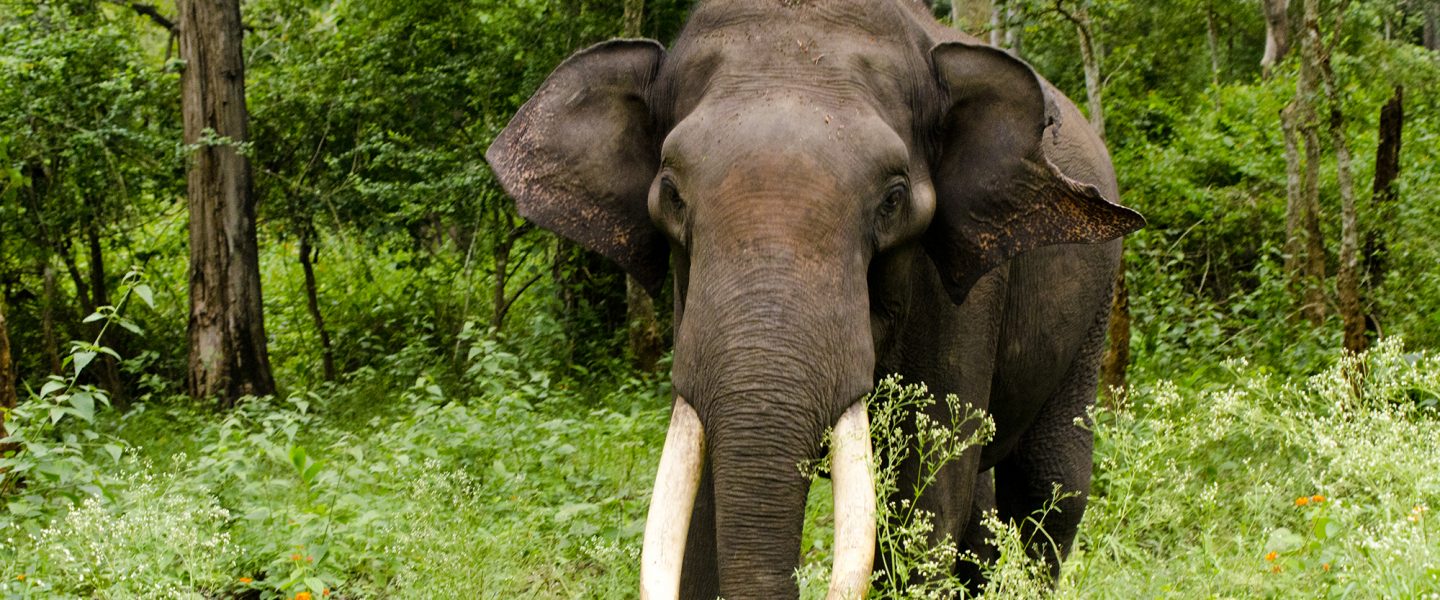This will be a critical year for several endangered and threatened species, as well as a time of opportunity for others.
|
Listen To This Story
|
This story by John R. Platt and Tara Lohan was originally published by The Revelator and is part of Covering Climate Now, a global journalism collaboration strengthening coverage of the climate story.
Here at The Revelator, we spend our days reading and writing about endangered species and our nights worrying about them. At the same time, we spend our days talking to and writing about people working to save these species from extinction — and that helps us sleep better at night.
As we move into 2023, here are more than a dozen species we’ll be watching in the year ahead. They represent species on the brink, those awaiting protection, those recovering, and those whose habitat could be disrupted in the coming year. They don’t represent everything — there’s no way one list could encapsulate every threat facing endangered species, or every species deserving attention — but this should give you an idea of some of the reasons wildlife on this planet are suffering and the things we can do to help them.

Piping Plovers (Charadrius melodus)
A rebounding population of Great Lakes piping plovers provides a glimpse at the success of dedicated conservation efforts and endangered species protections.
The Great Lakes population of these shorebirds was listed as endangered in 1985 after it was lost from all of its range except Michigan, with just 19 pairs remaining. Habitat destruction from shoreline development and recreation likely played a big role in the decline.
But years of dedicated recovery efforts helped make 2022 a banner year for these plovers, with 150 chicks fledgling in the wild — the most since they were protected as endangered. These efforts included “nest protection via enclosures and fencing, site monitoring, education and outreach, captive rearing, and annual banding,” reported Audubon.
It’s a bright spot in a dim overall outlook for birds across the United States. A 2022 State of the Birds report found bird populations declining in virtually every type of habitat, and 70 species have lost two-thirds of their populations in the past 50 years. The one habitat exception was wetlands, where conservation dollars have poured in to help ducks and geese, who are popular with hunters. The biggest losses have been felt among grassland birds, where agriculture has destroyed native grasslands and introduced toxic pesticides. Shorebirds have suffered major declines as well — 10 species had population declines above 70 percent since 1980.
We’ll be watching to see if the numbers of Great Lakes piping plovers continue to climb and if their recipe for success can be applied to more at-risk birds.

Wolves (Canis lupus)
To understand why we included wolves on this year’s list, just look back to 2022. Colorado moved forward on plans to reintroduce wolves to the state (and perhaps kill too many of them in the process). Wolf populations increased in California and Oregon. Poachers killed animals in Oregon and other states. Idaho and Montana moved forward on more plans to legally hunt more wolves. Conservationists sued to restore national protections to wolves under the Endangered Species Act, after a judge reinstated protection for some populations outside the Rockies. Scientists outlined a plan to restore more wolves to more parts of the American West. Mexican gray wolves got a revised, if imperfect, restoration plan. Red wolves got a new draft plan, too, and the first red wolf cubs since 2018 were born in the wild.
On top of that, few species represent the breadth of conservation issues that we see in wolves. They’ve gained and lost protection more times than we can count, and the constant push between conservation, hunting, and other interests remains potent. Meanwhile wolves — who have enormous value for numerous human cultures — display a resilience that allows them to continue to spread and regain territory in places where they were once exterminated. We expect more of all of that — on all these fronts — in 2023.

Asian Elephants (Elephas maximus)
These pachyderms make our list this year because, well, no one else around here seems to be talking about them.
Asian elephants don’t get nearly the same scientific or media attention as their larger African cousins, but they face the same — if not worse — pressures from habitat loss, conflict with humans, population fragmentation, disease, poaching, and other exploitations. A recent paper calls this a “charisma failure” and finds that it results in less public awareness of Asian elephants’ endangered status. This, in turn, results in lower conservation funding and prioritization, especially in comparison to other charismatic megafauna species. It also restricts the size and effectiveness of protected areas available to Asian elephants, which leads to more elephant-human conflict, according to a recent study in Malaysia.
The media doesn’t help in this regard. Most of the recent media articles we found mentioning Asian elephants concerned cute baby animals in zoos, and the majority of those fail to mention the species’ endangered status or conservation challenges.
We expect Asian elephants to have a unique opportunity in the year ahead, with 30×30 dominating many top-level conservation discussions. Will it pay off for this oft-neglected species? We’ll be watching.

Vaquitas (Phocoena sinus)
With maybe 10 of these small porpoises left alive in their only habitat, the Gulf of California, all eyes should be on the Mexican government to see what it does next. Tragically, “what it does next” has traditionally amounted to “nothing.” Pay attention: Every further vaquita death matters.

Sea Pangolins (Chrysomallon squamiferum)
Hydrothermal vents, where mineral-rich waters spew from cracks in the seafloor miles below the surface of the water, support a unique and diverse array of animal life on par with the biodiversity of rainforests and coral reefs. Scaly-foot snails, also known as sea pangolin, are among these deep-sea residents.
In 2018 the IUCN listed the mollusks as endangered — not because of an existing threat, but because of one on the horizon. Two of the snails’ three known microhabitats in the Indian Ocean are being investigated as potential sites for deep-sea mining by companies looking to cash in on the demand for minerals needed for electric car batteries. “If mining is permitted the habitat could be severely reduced or destroyed,” the IUCN assessment found. “Even the initial exploration is likely to cause disruption to the habitat.”
Unfortunately sea pangolins are in good company. A 2021 global assessment of mollusks endemic to hydrothermal vents led to 184 being added to the IUCN Red List.
Time may be running out to save them. Despite calls for a moratorium, deep-seabed mining in international waters could begin as early as July, and the testing of mining equipment on the seafloor has already begun.

Guizhou Snub-Nosed Monkeys (Rhinopithecus brelichi)
There are easily a few dozen primates that could end up on this year’s list, but for now let’s focus on this bizarre-looking species. Native to China, only about 125 to 336 of these monkeys are left alive, crammed into a single nature reserve — one that was created to protect them. But that promise has failed, and the population has plummeted over the past decade as tourism and nearby agriculture have soared. Now researchers have called on China to place immediate limits on tourism in the reserve, reconnect a migration corridor to improve genetic health, and create additional populations in case the first one crashes further. “Without immediate action,” they warn, “the Guizhou snub-nosed monkey could go extinct.”
The snub-nosed monkey is not alone in its plight: Primates around the world are generally in peril, and the species in China are often at the tip of that spear of extinction. Will China take action to protect this species — and others within its borders — before it’s too late? Will other countries stand up to conserve their own native primates, to set aside nature for them and other species to live, and to reestablish migration corridors?
If the nations of the world don’t address these issues, we’ll be asking another question: How long until the next primate extinction is announced?

Pillar Corals (Dendrogyra cylindrus)
Mass coral bleaching in the Great Barrier Reef has signaled dire times for corals, but there’s more bad news in the Atlantic, too.
Pillar corals, found in the western Atlantic from Florida to the Caribbean, are in peril. These stony corals have been moved from vulnerable to critically endangered on the IUCN Red List as their populations fell 80 percent across much of their range since 1990, with most of the loss being much more recent.
The biggest threat is a relatively new one: stony coral tissue loss disease, which was discovered on the Florida reef tract in 2014 and rendered pillar corals there “functionally extinct” a few years later. The disease has since spread south to the Caribbean.
It’s not just pillar corals at risk, either. At least 22 species of reef-building corals are vulnerable, and the disease can kill within weeks or months after infection.
Pollution, destructive fishing practices, and climate change add to the problem by weakening corals.
As scientists work to prevent the disease from spreading further, other corals face grave threats as well. Globally, one-third of all coral species are now listed as endangered. Climate change is a primary contributor in many places.
If we don’t work to stem rising sea temperatures, the biodiversity implications of coral loss will be massive. Reefs support 25 percent of marine species. Without them entire ecosystems could collapse, and thousands of species of fish, birds, sea turtles, plants, invertebrates, and marine mammals could be without the food or shelter that reefs help create.

Caribou (Two subspecies of Rangifer tarandus)
Climate change poses one of the biggest threats to Dolphin and Union caribou (Rangifer tarandus groenlandicus), a distinct population of barren-ground caribou native to Canada’s northern territories. The US Fish and Wildlife Service designated the caribou as endangered under the Endangered Species Act in December. Their population has alarmingly dropped 75 percent between 2015 and 2018.
The caribou migrate across sea ice between the mainland and Victoria Island. Warming temperatures weaken the ice, making the journey to their breeding, feeding, and wintering grounds potentially fatal. A decrease in sea ice has also brought more shipping and industrial activity, which further disrupts sea ice formation and threatens the animals with “mass drowning events,” according to the Fish and Wildlife Service.
As climate change drives more warming, expect more trouble for these caribou.
But these northern subspecies aren’t the only ones facing grave dangers. Woodland caribou (Rangifer tarandus caribou) once ranged across half of Canada and some northern US states. But they’re now mostly gone from their southern range. In Canada’s boreal forests, they’re listed as threatened under the federal Species at Risk Act, Canada’s version of the Endangered Species Act.
Their biggest threat is habitat fragmentation driven by logging, mining, and oil and gas development.
While Canada’s boreal woodland caribou try to hang on, in the United States the damage has already been done. Here southern mountain caribou, a distinct population segment of woodland caribou, were listed as endangered under the Endangered Species Act, but none are believed to still be living in the wild.
Will Canada increase protection efforts and safeguard caribou habitat? A recent announcement at the UN biodiversity conference in December suggests that some help could be on the way with an agreement between Canada’s federal government and Yukon to increase protected areas in the far north. “Barren-ground and boreal caribou, along with wood bison are at-risk species the agreement says will be prioritized,” the CBC reported.
Quick Hits
Our colleagues, the activists at the Center for Biological Diversity, suggested several additional species to add to this year’s list, chief among them a toad and a rare plant.
Both the Dixie Valley toad and Tiehm’s buckwheat just gained Endangered Species Act status in December, which could protect their habitats from potential renewable energy projects. The world desperately needs more renewable energy, but it shouldn’t come at the expense of endangered species or even extinction — a fate that could await these two species if their habitats are destroyed for geothermal energy or lithium mining.
Meanwhile, coal still causes problems for a lot of wildlife, including the yellow-spotted woodland salamander, who lives only on an outcrop of Appalachian rock that’s due for mountaintop removal.

Jaguars are starting to wander back into the United States decades after they were eradicated here. In December the Center filed a petition to have the government more actively reintroduce the species. They’re trickling in slowly on their own but need plenty of help to reestablish themselves in their ancestral homes.
The fish of the Colorado River will need some attention as the drought there continues. Wildlife have traditionally gotten short shrift when it comes to Colorado River water allocation, and now several species are paying the price. New rules currently in the works could be all it takes to end several of the river’s key fish species.
We’re eager to learn the fate of the regal fritillary, a large, colorful butterfly that relies on Prairie remnants across the upper Midwest. Conservationists petitioned to protect it way back in 2013; the US Fish and Wildlife Service is supposedly going to finally look into that this year. We hope the news is worth the wait.
And what list would be complete without the eastern hellbender? The Fish and Wildlife Service denied a petition to protect that species last year; conservationists hope this year will bring a reversal. Hellbenders are some of the world’s biggest salamanders, and they’re at risk from a wide range of environmental threats that also affect humans. Saving them would be heavenly news for us all.





